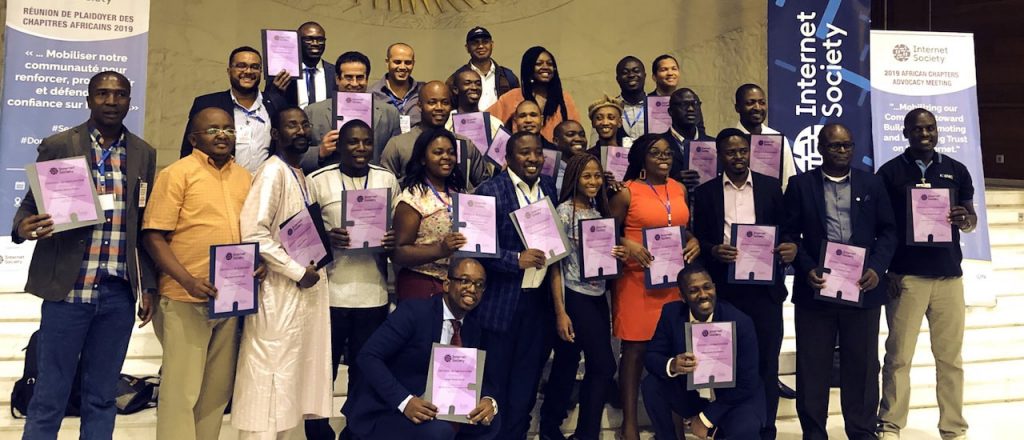How Common Are Data Center Meltdowns?
We all know about catastrophic headline-generating failures like AWS East-1 region falling apart or a major provider being down for a day or two. Then there are failures known only to those who care, like losing a major exchange point. However, I’m becoming more and more certain that the known failures are not even the tip of the iceberg - they seem to be the climber at the iceberg summit.
Read more ...Heavy Networking 444: Silver Peak And Zscaler Team Up On SD-WAN Security (Sponsored)
On today's Heavy Networking, we explore with sponsor Silver Peak the combination of SD-WAN and security; namely, how Silver Peak has partnered with Zscaler for cloud-based security scanning. We talk with a Silver Peak customer for an on-the-ground perspective, then drill into the tech details of the partnership, including encryption, policy enforcement, and operational impacts.
The post Heavy Networking 444: Silver Peak And Zscaler Team Up On SD-WAN Security (Sponsored) appeared first on Packet Pushers.
HPE’s Liz Joyce Talks Cybersecurity, Cookies, and How Diversity Helps Beat the Baddies
 “Cybersecurity is a big challenge,” Joyce said. “And if you don’t have diversity, you’re...
“Cybersecurity is a big challenge,” Joyce said. “And if you don’t have diversity, you’re...
Verizon’s 5G Future Tied to Spectrum, Technology Advances
 Verizon CEO Hans Vestberg declined to say which spectrum bands it will bring to 5G, but he did...
Verizon CEO Hans Vestberg declined to say which spectrum bands it will bring to 5G, but he did...
Sylabs Slides Singularity Updates Into Its Enterprise Pro Package
 Sylabs’ platform uses the Linux-based Singularity container platform, which its CEO developed in...
Sylabs’ platform uses the Linux-based Singularity container platform, which its CEO developed in...
The Internet Society’s African Chapters Join the African Union and Other Partners to Discuss IoT Security, Privacy, and Digital ID in Africa

In collaboration with the Africa Union Commission (AUC), the Africa Telecommunication Union (ATU), and Omidyar Network, from 8-11 April 2019 the Africa Regional Bureau successfully gathered in Addis Ababa, Ethiopia 103 participants comprising Internet Society Chapter leaders, African Regional economic bodies, privacy experts, regulators, and data protection agencies to a two-day workshop on IoT Security, Privacy, and Digital ID followed by the 2019 African Chapters Advocacy Meeting.
The first day of the workshop focused on IoT opportunities and security considerations. It explored the IoT landscape in Africa and shared active deployments and chapter-led projects. The day also discussed IoT security and privacy considerations with emphasis on frameworks that could be implemented to ensure the security and safety of IoT devices. A dedicated session on aligning policy and IoT security needs shared the experience of the Senegal multistakeholder IoT security process and motivated member states to initiate a similar process in their countries.
The second day focused on localizing the AUC and Internet Society Personal Data Protection Guidelines. Our partners AUC, Omidyar Network, Mozilla Foundation, and UNECA unpacked issues related to digital identity, personal data protection and privacy in the region. The meeting explored the nature of policies in place to Continue reading
NetElastic Combines SD-WAN, Application Visibility on New Enterprise Router
 The three-year old startup first made its way into SD-WAN in 2018, developing a carrier-centric...
The three-year old startup first made its way into SD-WAN in 2018, developing a carrier-centric...
China Unicom Signals Intent to Be Among First With 5G
 The Chinese operator plans 5G trials in seven major cities as Qualcomm announces its support for...
The Chinese operator plans 5G trials in seven major cities as Qualcomm announces its support for...
Girls in ICT Day: Attend the Global Marathon in Digital Skills Development

There’s a lack of gender diversity at all levels in the technology sector. This is partly because the number of female students in mathematics, engineering, computer science, and science is disproportionately low around the world. So how do we close this gap?
Support for the education of women and girls in the ICT sector is consistent with the Sustainable Development Goals (SDGs) – in particular SDG 5, aimed at achieving gender equality and empowering all women and girls through, among other things, information and communication technologies.
The Women’s Special Interest Group (Women SIG) of the Internet Society is committed to promoting the participation of women in the Internet ecosystem, especially considering the importance to increase the participation of girls and adolescents in Information Technology and Communication.
This April 25, International Day of Girls in ICT, promoted by the International Telecommunication Union (ITU), aims to reduce the digital gender gap and to encourage and motivate girls to participate in technology careers. With the support of the Internet Society Chapters and local civil society organizations, we’re planning to celebrate the day with a global marathon of training in digital skills development. We want to motivate girls and teenagers to study and Continue reading
The Climate and Cloudflare


Power is the precursor to all modern technology. James Watt’s steam engine energized the factory, Edison and Tesla’s inventions powered street lamps, and now both fossil fuels and renewable resources power the trillions of transistors in computers and phones. In the words of anthropologist Leslie White: “Other things being equal, the degree of cultural development varies directly as the amount of energy per capita per year harnessed and put to work.”
Unfortunately, most of the traditional ways to generate power are simply not sustainable. Burning coal or natural gas releases carbon dioxide which directly leads to global warming, and threatens the habitats of global ecosystems, and by extension humans. If we can’t minimize the impact, our world will be dangerously destabilized -- mass extinctions will grow more likely, and mass famines, draughts, migration, and conflict will only be possible to triage rather than avoid.
Is the Internet the primary source of this grave threat? No: all data centers globally accounted for 2-3% of total global power use in recent years, and power consumption isn’t the only contributor to human carbon emissions. Transportation (mostly oil use in cars, trucks, ships, trains, and airplanes) and industrial processing (steel, chemicals, heavy manufacturing, Continue reading
Termshark

A terminal UI for tshark, inspired by Wireshark
The post Termshark appeared first on EtherealMind.
Prometheus exporter
Prometheus is an open source time series database optimized to collect large numbers of metrics from cloud infrastructure. This article will explore how industry standard sFlow telemetry streaming supported by network devices (Arista, Aruba, Cisco, Dell, Huawei, Juniper, etc.) and Host sFlow agents (Linux, Windows, FreeBSD, AIX, Solaris, Docker, Systemd, Hyper-V, KVM, Nutanix AHV, Xen) can be integrated with Prometheus to extend visibility into the network.The diagram above shows the elements of the solution: sFlow telemetry streams from hosts and switches to an instance of sFlow-RT. The sFlow-RT analytics software converts the raw measurements into metrics that are accessible through a REST API. The sflow-rt/prometheus application extends the REST API to include native Prometheus exporter functionality allowing Prometheus to retrieve metrics. Prometheus stores metrics in a time series database that can be queries by Grafana to build dashboards.
Update 19 October 2019, native support for Prometheus export added to sFlow-RT, Prometheus application no longer needed to run this example, use URL: /prometheus/metrics/ALL/ALL/txt. The Prometheus application is needed for exporting traffic flows, see Flow metrics with Prometheus and Grafana.
The Docker sflow/prometheus image provides a simple way to run the application:
docker run --name sflow-rt -p 8008:8008 -p Continue reading
Amazon CloudFront with WordPress as Infrastructure as Code
There are roughly a GAJILLION articles, blogs, and documents out there that explain how to setup Amazon CloudFront to work with WordPress.
Most of them are wrong in one or more ways.
- They advise a type of cache behavior that is incorrect for one or more WordPress assets.
- They fail to provide any advice for WordPress assets that need specific cache behavior.
- The article/blog/document is stale and hasn’t been updated to reflect changes in newer versions of WordPress.
Rather than fall into the trap of writing yet another article for whatever the “now current” version of WordPress is that will likely fall victim to one or more of the conditions listed above, I’m going to take a different approach.
I’m going to codify the CloudFront configuration, version it on GitHub, and adopt an “infrastructure-as-code” (IaC) mentality. This blog post will describe the overall architecture and provide some context, but the actual mechanics of setting up CloudFront to work with WordPress will live (and evolve!) in the IaC files themselves which will be under version control.
Let’s do it!
The Architecture
I’ll say this up front: this architecture may not be for everyone (but I have a sneaky Continue reading
Cumulus NetQ Reinvented
When it comes to visibility into the health of your network. telemetry is all the rage these days. Even so, many customers are still plowing through old SNMP and Flow data to try to piece together what went wrong in their network with no easy way to back the clock up to a time before something broke your spine or leaf! Network downtime is usually costly and for many customers, large and small, can be mission critical.
With these and many other reasons in mind, I’m really excited to introduce Cumulus NetQ. With NetQ, Cumulus Networks has reinvented, from the ground up, our original NetQ product to include a long list of very useful features that are sure to make NetQ a Network Operators best friend.
 Figure 1: Cumulus NetQ Benefits
Figure 1: Cumulus NetQ Benefits
NetQ is a highly-scalable, modern network operations toolset that provides visibility into and troubleshooting of your overlay and underlay networks in real-time. NetQ, delivers actionable insights and operational intelligence about the health of your network and your Linux-based data center — from the container, virtual machine, or host, all the way to the switch and port. In short, NetQ provides holistic, real-time intelligence about your modern network.
So, what Continue reading
Your Job and EOL Products

Don't bet on products, bet on skills and knowledge
The post Your Job and EOL Products appeared first on EtherealMind.

 Figure 1: Cumulus NetQ Benefits
Figure 1: Cumulus NetQ Benefits